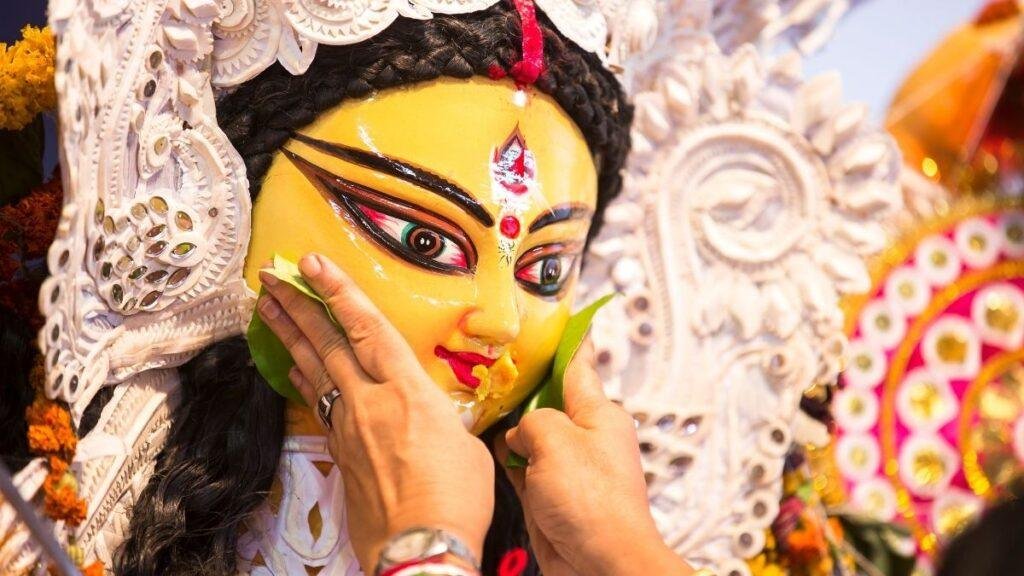
Navaratri is a Hindu festival that spans nine nights (and ten days) and is celebrated every year in the autumn. It is observed for different reasons and celebrated differently in various parts of the Indian cultural sphere. Theoretically, there are four seasonal Navaratri. However, in practice, it is the post-monsoon autumn festival called Sharada Navaratri that is the most observed in the honor of the divine feminine Devi (Durga).
Navratri 2024 date, Time and puja muhurat
Chaitra Ghatasthapana on Tuesday, April 9, 2024
Ghatasthapana Muhurat Start – April 08 | 10:03 PM in (United States)
Ghatasthapana Muhurat End – April 09 | 2:15 AM in (United States)
Duration-04 Hours 12 Mins
Ghatasthapana Abhijit Muhurat Start – April 09 | 3:56 AM in (United States)
Ghatasthapana Abhijit Muhurat End – April 09 | 4:46 AM in (United States)
Ghatasthapana Muhurata falls on Pratipada Tithi
Ghatasthapana Muhurata falls during Prohibited Vaidhriti Yoga
Pratipada Tithi Begins–April 08 | 2:20 PM in (United States)
Pratipada Tithi End– April 09 | 11:00 AM in (United States)
Vaidhriti Yoga Begins– April 08 | 8:44 AM in (United States)
Vaidhriti Yoga Ends– April 09 | 4:48 AM in (United States)
Puja Samagri for Navratri
● A picture or idol of Goddess Durga in the temple altar
● Chunri or a red coloured dyed cloth
● Fresh mango leaves
● Rice
● Durga Saptashati book
● A red thread called Moli
● Gangajal
● Sandalwood
● Coconut
● Red sacred powder or Moli
● Barley seeds
● A clay pot to sow barley seeds
● Gulal
● Supari or Areca nut
● Pan or Betel Leaves
● Cloves or Laung
● Cardamom or Elaichi
Step by step Navratri Puja Vidhi
Ghatasthapana: Place the Durga idol in a chowki and near it keep the clay pot with sown barley. Consider doing Ghatasthapana during the Muhurat
Establish the Kalash: Pour water in a Kalash and then put flowers, coins, and five mango leaves in it. Close it with the lid and put raw rice on top of it and then place a raw coconut wrapped in red cloth. The Ghata Sthapana is done now.
Worship the Goddess: First lit a Diya in front of the idols. Do worship of Kalash or Ghat with Panchopchar. Panchopchar means worship of the deity with five things, i.e. Scent, Flower, Dhoop, Deepak, and Naivedya. Offer these five things to deities present in Ghat.
Chowki Sthapana: You need to install and invoke Goddess Durga. For this, spread the red cloth on chowki. Tie Moli around it. Now place idol or picture of Goddess Durga on the chowki.
Durga Puja: Chant the necessary prayers and invoke Goddess Durga to come and enlighten your home. People pray to the Goddess to establish her for 9 days at their homes. Rituals are done in the usual puja procedure like offering flowers, Chandan, sindoor, bhog, diya, and much more. Panchopchar is also a part of it where you need to offer five things to the Goddess.
Aarti Of Durga Mata: Take Puja ki Thali and bell in hand. Sing the aarti with jingle the bell. After you complete Durga aarti, give aarti first to Goddess Durga, Ghat (Kalash) and deities are present in Ghat. In the evening (sandhya) repeat the Durga aarti again. This is done for all 9 days. Many people keep fast for all the 9 days and some for the first and last day.
Inviting 9 Goddesses for offerings: On the 9th day of Navratri, people prepare delicious food for 9 girls of age between 5-12, who are invited as Goddesses. This ritual is known as Kanya Puja. After lunch, they are offered gifts as well.
Ghat visarjan on Navratri: After the nine days puja is over, the visarjan or conclusion is done on the tenth day. On the tenth day, clean yourself and be seated in the puja place. Take some flowers and raw rice in your hands and chant the following prayer: “Oh, respected and beloved gods, we thank you for accepting our humble invitation to visit our home, stay over the nine days and bless the puja. We dedicate the nine days of puja to you with full devotion and love. Now you may please leave for your divine abodes and visit us when we pray you again.” Offer the flowers and raw rice to the deities. Slightly move the ghat as a mark of conclusion.
Thank Maa Durga: Now follow the same procedure to thank Maa Durga for visiting your home and accepting the puja using the same format of the mantra given above. Remove the picture or idol of Maa Durga from the altar and place it back in the original permanent place.
Day-wise Significance of all 9 forms (AVATAR) of Goddess
Devi (The Goddess) is worshipped in 9 forms known as Navadurga. The significance of each day of Navratri is attached to a form of the Mother Divine.
First Day – Shailaputri
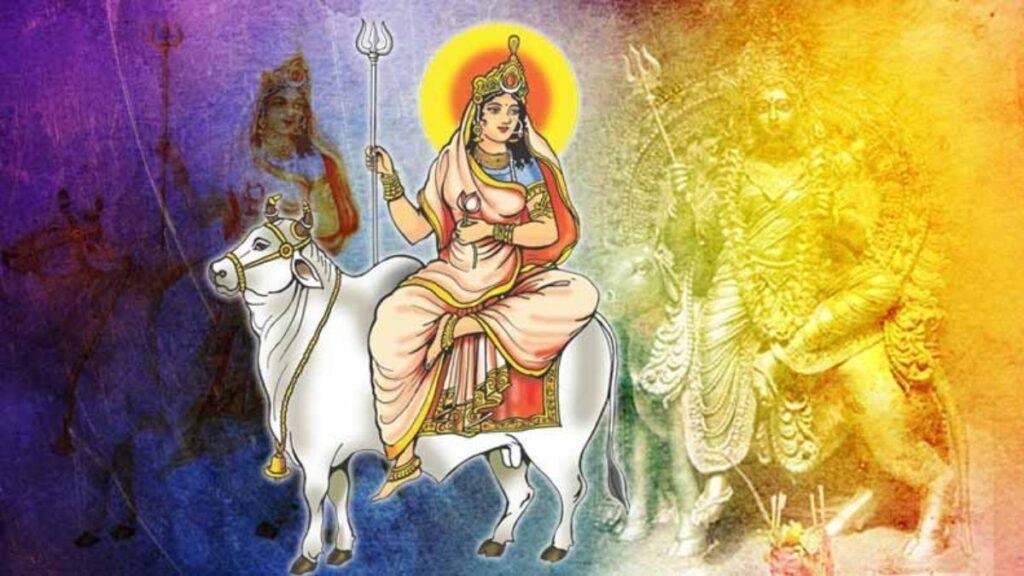
On the first day, Devi Shailaputri is worshipped. In this form, Devi Parvati is revered as the daughter of Himalaya Raja. Shaila means extraordinary or rising to great heights. The divine consciousness represented by Devi always surges from the peak. On this first day of Navratri, we propitiate Devi Shailaputri so that we may also attain the highest state of consciousness.
Second Day – Brahmacharini
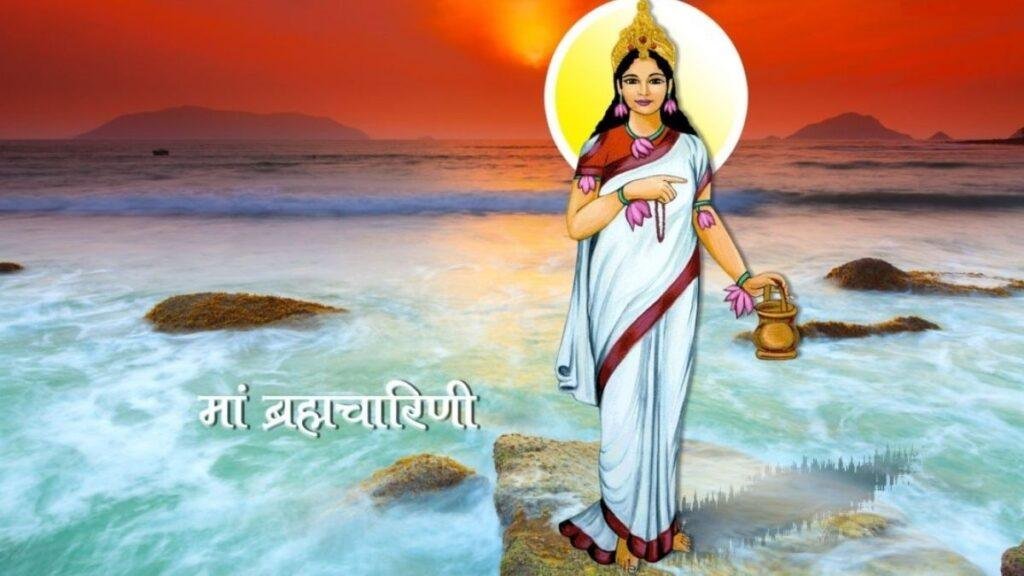
On the second day, Devi Brahmacharini is propitiated. Devi Brahmacharini is the form of Devi Parvati in which she undertook severe penance to have Lord Shiva as Her consort. Brahma means divine consciousness and achar refers to behaviour. Brahmacharya is the behaviour or an act that is established in divine consciousness. This day is especially sacred to meditate and explore our inner divinity.
Third Day – Chandraghanta

On the third day, Devi Chandraghata is the presiding Devi. Chandraghata is the special form that Devi Parvati assumed at the time of Her marriage with Lord Shiva. Chandra refers to the moon. The moon represents our mind. The mind is restless and keeps moving from one thought to another. Ghanta is a bell that produces only one kind of sound always. The significance is that when our mind is established at one point, i.e Divine, then our prana (subtle life force energy) gets consolidated leading to harmony and peace. This day thus signifies withdrawing from all vagaries of the mind, with a single focus on Mother Divine.
Fourth Day – Kushmanda
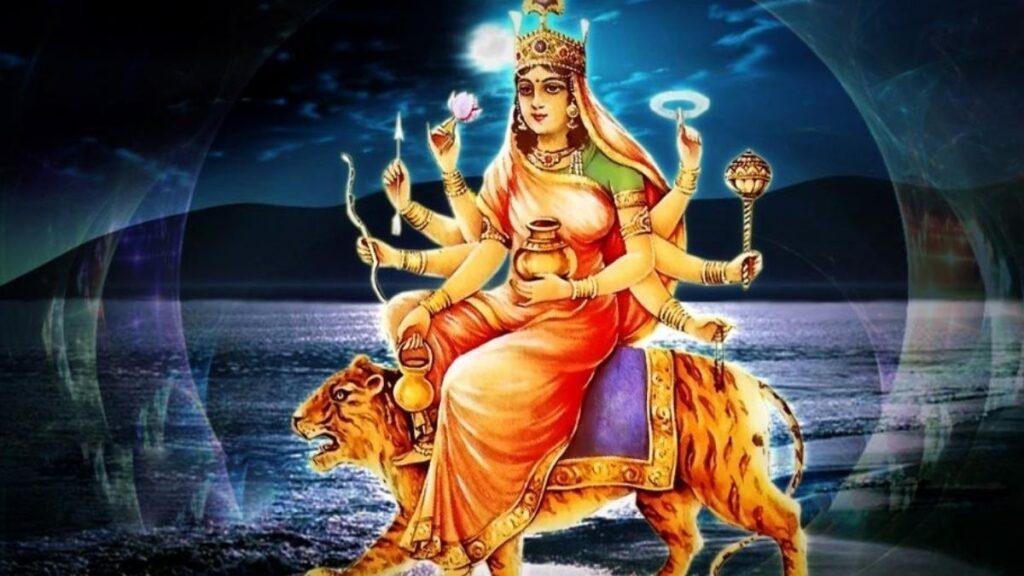
On the fourth day, Mother Divine is worshipped as Devi Kushmanda. Kushmanda means a pumpkin. Ku means little, ushma means energy and refers to an egg. This entire universe which arose from the cosmic egg (hiranyagarbha) is manifested from the infinitesimal energy of Devi. A pumpkin also represents prana as it has the unique property of absorbing and radiating prana. It is one of the most pranic vegetables. On this day, we worship Devi Kushmanda who showers us with Her divine energy.
Fifth Day – Skandamata
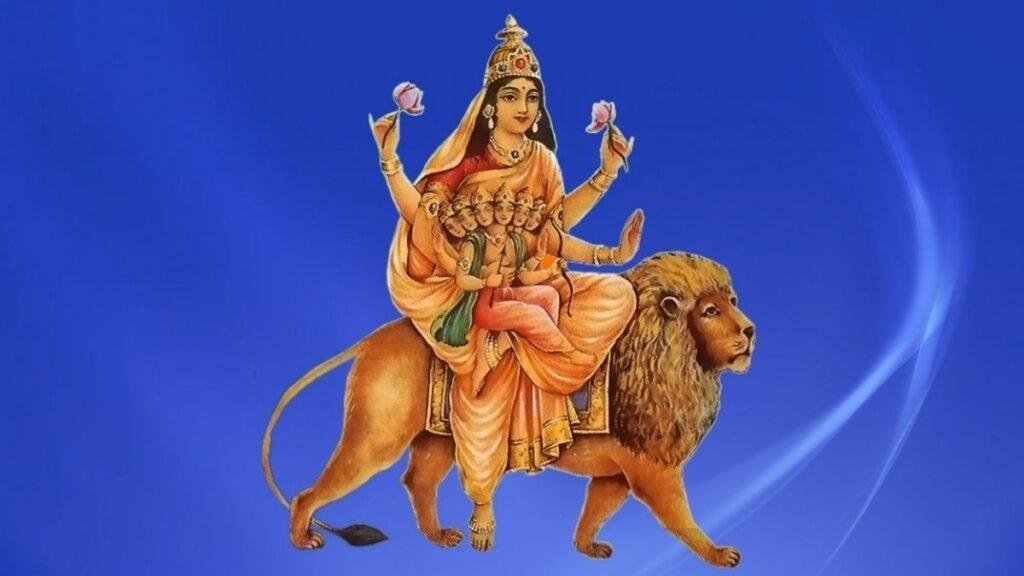
Skandamata means Mother of Skanda. On the fifth day, the motherly aspect of Devi Parvati is worshipped. In this form, she is the mother of Lord Karthikeya. She represents motherly affection (vatsalya). Worshipping this form of Devi brings an abundance of wisdom, wealth, power, prosperity and liberation.
Sixth Day – Katyayani
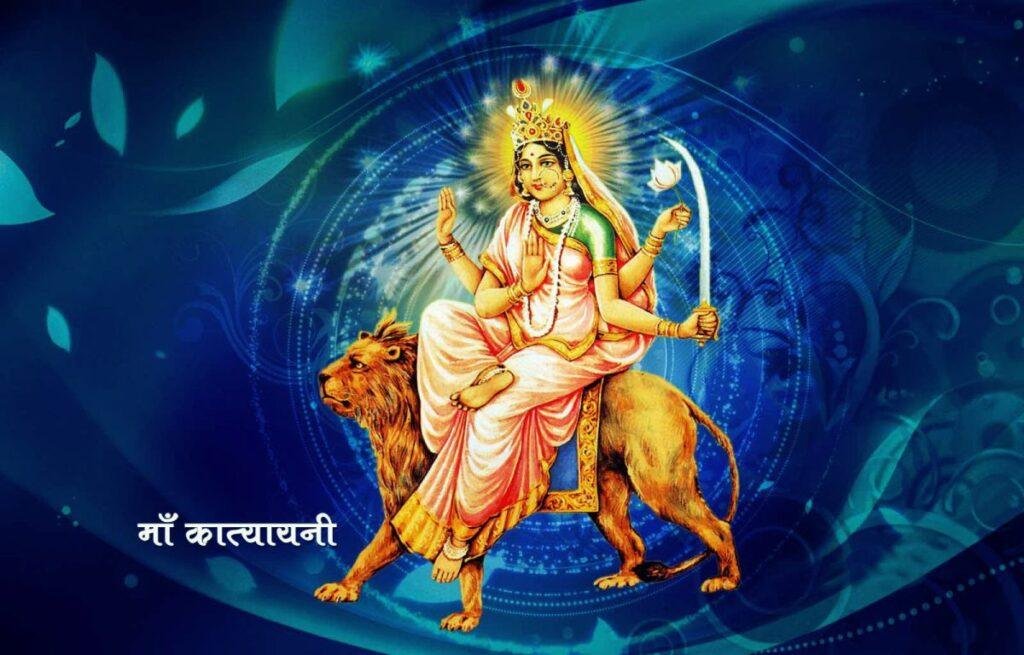
On the sixth day, Devi manifests as Katyayani. It is a form that Mother Divine assumed to annihilate the demonic forces in the universe. She was born from the anger of the gods. She is the one who slew Mahishasura. As per our scriptures, anger that supports dharma (righteousness) is acceptable. Devi Katyayani represents that divine principle and form of the Mother Divine who is behind natural calamities and disasters. She is the anger that arises in creation to restore balance. Devi Katyayani is invoked on the sixth day to put an end to all our inner foes that are an obstacle on the path of spiritual evolution.
Seventh Day – Kalaratri

On the seventh day, we invoke Devi Kalaratri. Mother Nature has two extremes. One is terrifying and devastating. The other is beautiful and serene. Devi Kalaratri is a fierce form of Devi. Kalaratri represents the dark night. The night is also considered an aspect of Mother Divine as it is the night that brings solace, rest and comfort to our souls. It is only at night that we get a glimpse of infinity in the skies. Devi Kalaratri is that infinite dark energy that houses innumerable universes.
Eighth Day – Mahagauri
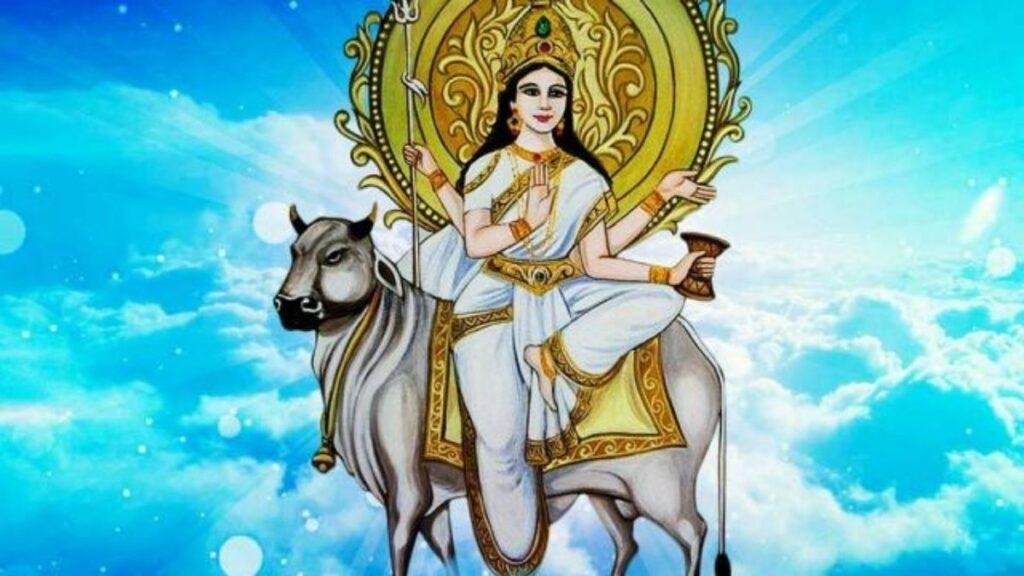
Devi Mahagauri is that which is beautiful, gives momentum and freedom in life. Mahagauri represents the beautiful and serene aspect of Nature. She is that energy that propels our lives and also liberates us. She is the Devi who is worshipped on the eighth day.
Ninth Day – Siddhidatri

On the ninth day, we worship Devi Siddhidatri. Siddhi means perfection. Devi Siddhidatri brings perfection in life. She makes the impossible, possible. She takes us beyond the ever reasoning logical mind to explore the realm beyond time and space.
Navratri Puja benefits
Navratri puja is a simple but highly significant and beneficial puja to be performed by the households with devotion year on year. You can do the puja in the same manner for Shard Navratri as well as Chaitra Navratri. Households doing the puja sincerely will be blessed with abundance, wealth, health, happiness, and peace.





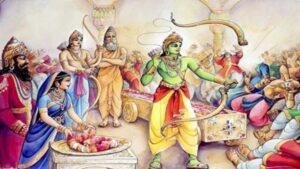
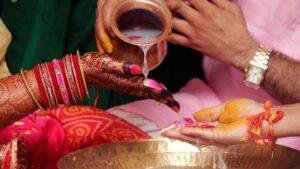

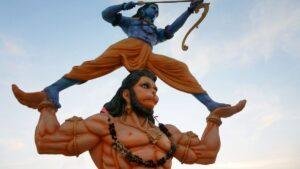




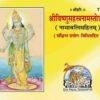





Add comment